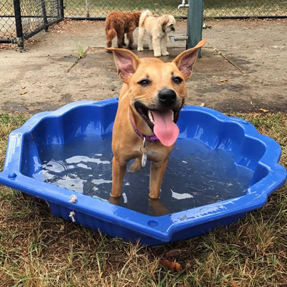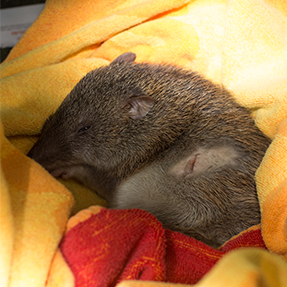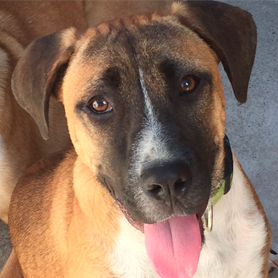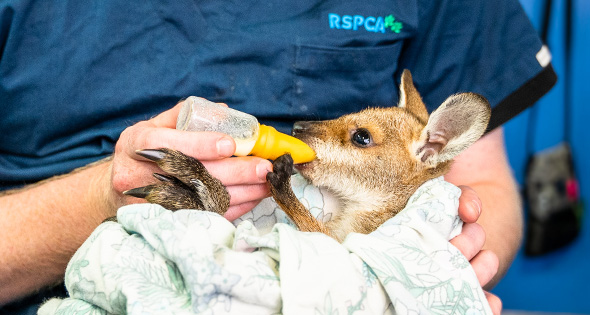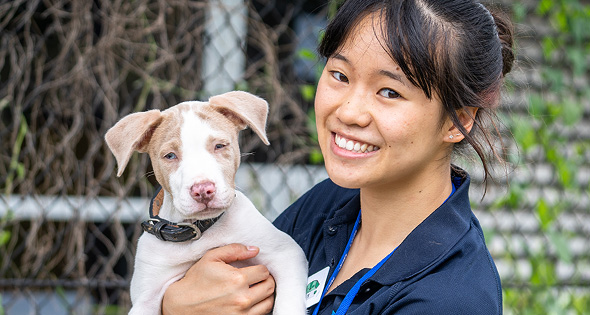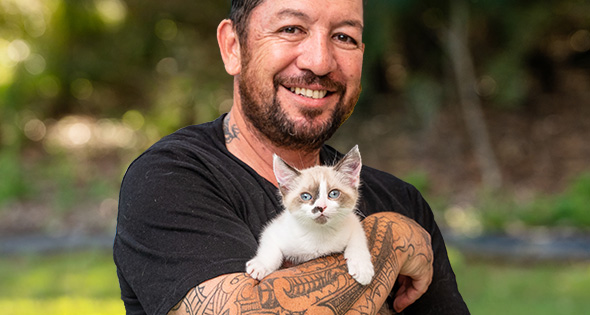Who is responsible for the management of the Fraser Island Dingo?
On Fraser Island the dingoes are considered a protected native species under the Nature Conservation Act 1992, and therefore come under the jurisdiction of the Queensland Department of Environment and Resource Management (DEHP). DEHP can fulfill its responsibility towards native species in many ways; one way is to have a management plan. The Fraser Island Dingo is under a management plan.
The aims of the management plan are to: 1) conserve a sustainable wild population of dingoes on the island; and 2) reduce the risk to humans by decreasing the frequency of the dingoes’ destructive and aggressive behaviour.
The Fraser Island Dingo Management Plan was developed as a direct result of the death of a young boy in 2001 following a dingo attack, and the resultant calls for a mass cull of all dingoes on the island. DEHP was opposed to a mass cull of the dingoes and wanted to maintain a population of dingoes on the island while ensuring the safety of residents and visitors.
The RSPCA has no jurisdiction or powers under the Nature Conservation Act, 1992 to interfere with the management of the Fraser Island dingoes. Please see Question 2 to find out about what the RSPCA can and is doing with respect to the dingoes on Fraser Island.
2. What is the RSPCA doing about the Fraser Island Dingo?
RSPCA Qld can and does play a number of roles with respect to the Fraser Island dingoes. Under the Animal Care and Protection Act, 2001, RSPCA Qld has the duty and power to investigate reports of cruelty to animals including wild animals. Any credible reports about cruelty to Fraser Island dingoes are taken seriously and investigated (see Question 4).
As the peak animal welfare organization in Australia we are recognized by DEHP (and other Queensland Government departments) as a stakeholder when issues of animal management and animal welfare are discussed. DEHP does consult with us but, of course, is not obliged to follow our advice. We talk with the Government about issues of concern to us. We see it as vital that we continue to work with DEHP and influence decisions when appropriate and possible. For example, we are currently pushing for more research on the dingoes.
RSPCA Qld takes the welfare of the dingoes on Fraser Island very seriously and regularly visits the island to see the dingoes and to consult with residents, visitors, rangers and other interested parties. We are always open to receiving opinions and constructive ideas from members of the public.
3. Are the Fraser Island Dingoes starving?
One of the major concerns raised by members of the public is that the dingoes are starving. The issue of lean dingoes is a complex one and there are a number of important points to consider.
- Dingoes are naturally lean. Wild dingoes are never going to look fat and will always look much thinner than our pet dogs. They naturally have the build of a racing greyhound.
- As a predator, dingoes need to reach a certain weight to be motivated to hunt for food. Wild predators rarely feed daily and their weight will vary depending on when they last ate.
- We more likely to see the thin dingoes for various reasons, for example sickness or advanced age. Such dingoes are cast out of the pack and therefore scavenge for food around human settlements. It is probable that the rest of the group thrives out of sight.
- Dingoes are the largest predator on Fraser Island and research overseas has shown that species that have this position in an environment are subject to high natural attrition (death) rates. This can be as high as 80% (meaning 80% of dingoes will die within their first couple of years). This may sound horrific but please remember that these are wild animals and this is the way nature functions and controls populations.
Research suggests that there is enough dingo food on Fraser Island to sustain a population of dingoes, but more research in this area is necessary. For example, we need to know how many dingoes are underweight (is it one in five, ten, twenty, or fifty?).The unfenced portion of Fraser Island represents the majority of the island and there are no plans to reduce the area available to the dingoes.
4. Are the Fraser Island Dingoes being treated cruelly?
This is a point that confuses and concerns many people. Whilst the term ‘cruelty’ is used loosely by many people for any situation where an animal appears to be suffering, cruelty has a specific legal meaning.
According to the Animal Care & Protection Act 2001, acts of cruelty include acts that cause an animal pain that, in the circumstances, is unjustifiable, unnecessary or unreasonable. Therefore actions performed by rangers, such as trapping, ear tagging and hazing, are justified, necessary and reasonable in the context of administering the Fraser Island Dingo Management Strategy (FIDMS). That is, actions carried out as part of the management strategy cannot legally be considered as cruel.
The definition of cruelty under the Act does not include acts of neglect. Acts of neglect, such as failing to provide food, water, accommodation, appropriate handling and vet treatment, or failing to permit display of natural behaviours, are defined as breaches of duty of care offences.
According to the Animal Care & Protection Act, 2001, a person in charge of an animal owes that animal a duty of care – and people who neglect their animals as outlined above commit offences. Wild animals are not legally owned by anyone; therefore no one owes wildlife a duty of care. The exception to this is when a wild animal is under human confinement or care, then there is a duty of care towards that animal by the human(s) involved.
To summarise, this means that if anyone, rangers or members of the public, commit an act of cruelty on a Fraser Island Dingo, then the RSPCA has the power to investigate and will investigate with a view to prosecuting the offender. But acts done as part of the Fraser Island Dingo Management Strategy are not acts of cruelty according to the law. So whilst the RSPCA can investigate and prosecute if a ranger is seen to beat a dingo with a stick while it is caught in a trap for example, we cannot investigate the actual trapping of the dingo.
Likewise, as the dingoes are wild animals, there is no duty of care owed to them by anyone and therefore the RSPCA does not have the power to investigate or prosecute anyone if a dingo is starving. In the same way, one wouldn’t expect anyone to be prosecuted every time a possum, koala, frog or lizard starves to death either. So whilst people can be charged with breaching their duty of care should they let their dog starve to death in their backyard, nobody can be charged if a wild animal starves to death in the wild.
5. Is hazing cruel?
Hazing is a practice whereby animals are deterred or averted from a particular area – and by necessity it has to be unpleasant to be successful. The hazing techniques employed by QPWS Rangers include shots of clay being fired at the ground near dingoes. The distance rangers must be from the dingoes to fire is mandated by the FIDMS.
Hazing is a strategy used under the FIDMS and therefore if carried out in accordance with the management strategy is exempt from cruelty provisions under the Animal Care & Protection Act, 2001. The RSPCA acknowledges that whilst hazing is unpleasant and sometimes painful for dingoes, if its use is successful in deterring dingoes from areas frequented by humans, then it reduces the risk of any negative interactions which can lead to a dingo being destroyed.
DEHP and QPWS have assured the RSPCA that they will continue to consider any viable alternatives to hazing.
6. Is ear tagging cruel?
The ear tagging currently in use is necessary to ensure accurate identification of dingoes for research purposes, and in cases where there have been negative interactions with humans. Whilst it is not ideal, there is currently no viable alternative. Again QPWS have assured the RSPCA that they are committed to examining and implementing any viable alternative to the current ear tagging system.
7. Are the electric fences cruel?
The fences are part of the FIDMS. The RSPCA has expressed concerns about the use of such fences. When the fences were activated the RSPCA insisted that ‘cut out’ mechanisms were put in place to ensure any animal that became stuck on the wires would not receive continuous stimulations.
There are other concerns that the RSPCA has about the fences which include:
- the possibility of other species being caught by the fence. (This issue has been addressed by the provision of dug outs under the grids);
- that dingoes may get in and then be unable to get out, and end up being involved in an incident with a person that might lead to their destruction;
- ecological imbalance may be caused by removing a top level predator from within the fenced areas. (The fenced area is a very small section of the island so this may not be a major issue.)
As with many aspects of the FIDMS, the question of whether the fences are having any adverse effects on island wildlife requires further study.
8. What is the RSPCA doing to encourage alternatives / improvements to the management plan?
RSPCA Qld maintains contact with DEHP and the rangers, and is always willing to discuss new strategies or changes to the plan. Our Inspectors, Wildlife Manager and Scientific Research Officer keep up to date with research and innovation in the area of wildlife management, and will continue to investigate any suggestions put forward by members of the public or DEHP. We also encourage more research into management strategies.
9. Is the RSPCA ignoring the FID issue because it receives government funding?
RSPCA Qld is not ignoring the Fraser Island dingoes (see Questions 2 and 8).
The RSPCA is a non-governmental, not-for-profit organization that receives very little financial support from the Government. The money we do receive is to support our inspectorial activities under the Animal Care and Protection Act, 2001 and represents less than 2% of our annual operating budget.
RSPCA Qld relies heavily on donations from the public and business to continue to operate and carry out our life saving work for animals. We are in no way connected to or controlled by the Government. We do not have to answer to the Government for our activities or attitudes (with the exception of our Inspectorate which must operate within the Animal Care & Protection Act, 2001.) We answer only to our board of directors and ultimately, of course, our supporters.
Recently RSPCA Qld received a large grant from the Government towards our new Animal Care Campus at Wacol. This was given with no strings attached and is a one-off grant.
The RSPCA continues to run campaigns and advocate for improved animal welfare for all species of animals. On many occasions we find ourselves opposed to government policy and actions, and on these occasions we are fearless in expressing our concerns and the reasons behind them. We are never a rubber stamp for government actions and policies.

